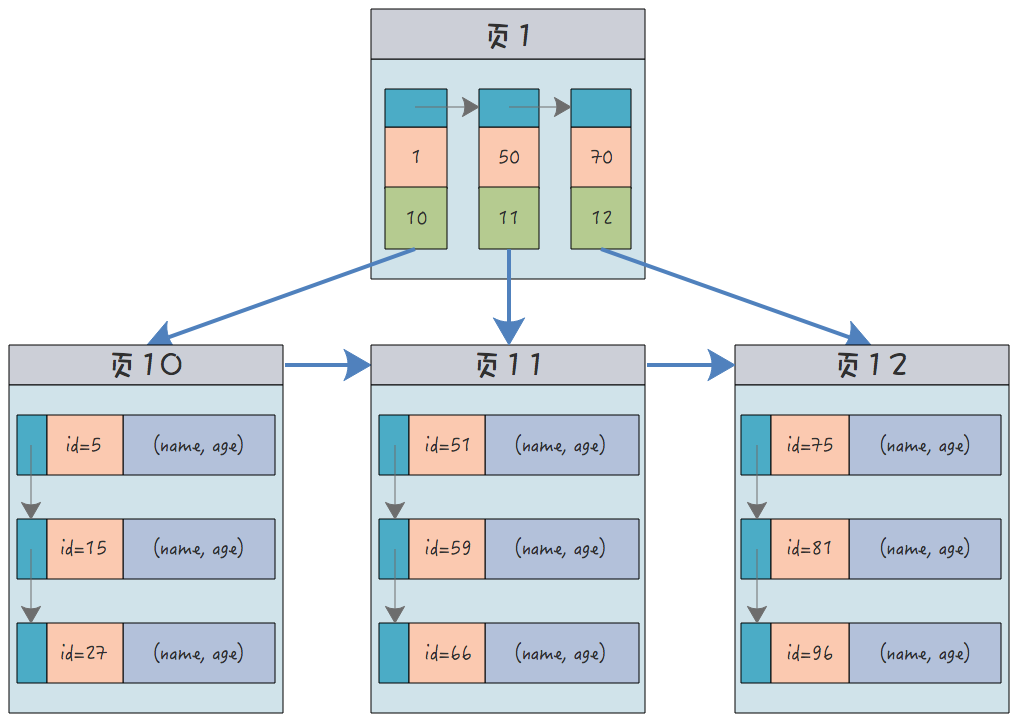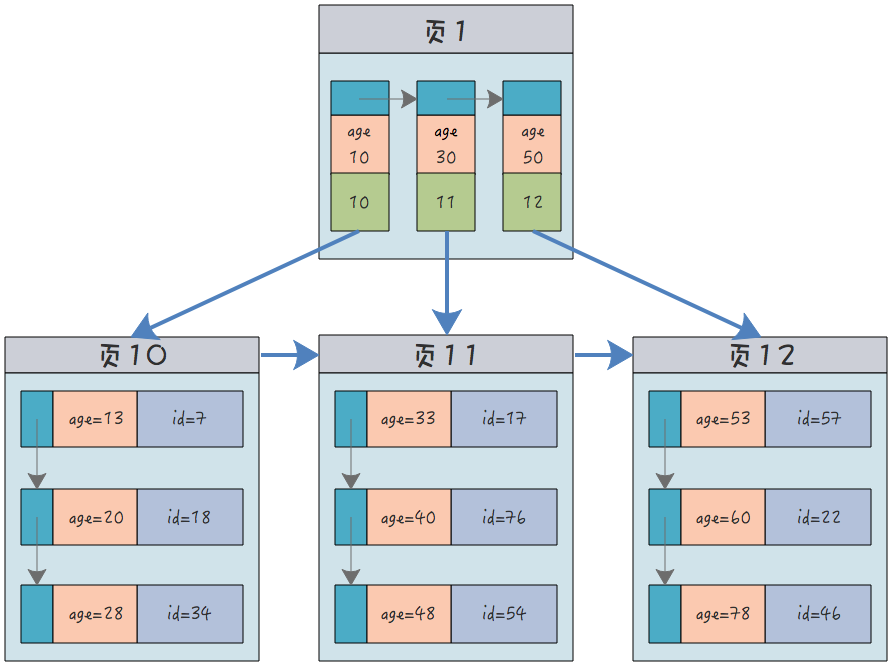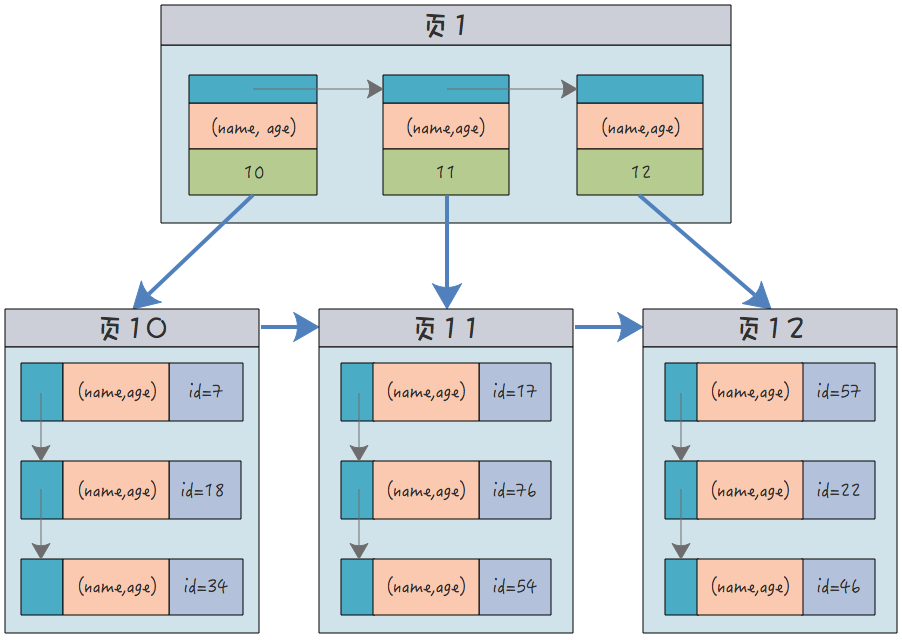 Database
Database
 Mysql Tutorial
Mysql Tutorial
 What are clustered indexes, non-clustered indexes, joint indexes and unique indexes in MySQL
What are clustered indexes, non-clustered indexes, joint indexes and unique indexes in MySQL
What are clustered indexes, non-clustered indexes, joint indexes and unique indexes in MySQL
1. Index type
Indices can be divided into B-Tree indexes and hash indexes according to the underlying implementation. Most of the time we use B-Tree indexes. -Tree index, because of its good performance and features, is more suitable for building high-concurrency systems.
Divided according to the storage method of the index, the index can be divided into clustered index and non-clustered index. The leaf nodes of a non-clustered index only contain all fields and primary key IDs, while the leaf nodes of a clustered index contain complete record rows.
According to clustered index and non-clustered index, it can be further divided into ordinary index, covering index, unique index and joint index.
2. Clustered index and non-clustered index
Clustered index is also called clustered index. It is not actually a separate index type, but a data storage method. The leaf nodes of the clustered index store all column information of a row of records. In other words, the leaf node of the clustered index contains a complete record row.
Non-clustered index is also called auxiliary index and ordinary index. Its leaf nodes only contain one primary key value. To find records through non-clustered index, you must first find the primary key, and then go to the clustered index through the primary key. Find the corresponding record row, this process is called table return.
For example, a data table containing user names and ages, assuming that the primary key is the user ID, the structure of the clustered index is (orange represents the id, green is the pointer to the child node):

In the leaf nodes, in order to highlight the records, (id, name, age) is distinguished. In fact, they are connected together. They form a line. The record as a whole.
The structure of a non-clustered index (with age as the index) is:

In addition to the age field itself, the leaf nodes of the node , only contains the primary key ID of the current record, and does not contain the information of the complete record. You need to query the clustered index through the ID number to obtain the entire row of record data.
In InnoDB, each table must have a clustered index, which will be created based on the primary key by default. If there is no primary key in the table, InnoDB will select a suitable column as the clustered index. If no suitable column is found, a hidden column DB_ROW_ID will be used as the clustered index.
3. Covering Index
Because the non-clustered index does not contain complete data information, searching for complete data records requires table return, so one query operation actually requires two index queries. . If every index query needs to be run twice to get the result, then this will inevitably lead to a loss of efficiency, because if you can reduce the query by one, you should reduce it by one.
Take the age index above as an example. It is a non-clustered index. If I want to query the user's ID by age, I execute the following statement:
1 |
select id from userinfo where age = 10; |
Is it still necessary to return the table in this case? Because I only need the value of the id, I can already get the id through the age index. If I still go back to the table once, wouldn't it be a useless operation? In fact it is not needed. When the auxiliary index already contains all the information required for the query, the table return operation can be avoided in the index query. This is a covering index.
4. Joint index
Joint index refers to an index created on multiple columns at the same time. After creating a joint index, the leaf node will contain the value of each index column at the same time, and it will be based on multiple columns at the same time. Column sorting, this sorting is similar to what we understand as dictionary order.
For example, the index structure created for the above names and ages at the same time:

(name, age)Both It's an abbreviation, and I can't think of a dozen names.
Each leaf node saves all index columns at the same time. In addition, it still only contains the primary key id.
Leftmost Prefix Matching Principle
When an index is created for multiple columns, the index cannot be used as long as it contains the columns for which the index was created. The use of the index must follow the leftmost prefix matching principle.
Assuming that an index is created for column (A, B, C), then only the following scenarios can use the index:
- ##For column (A, B, C)/( Querying A, C) or (A, B) will match the index, and the index cannot be used for (C, A) or (B, C).
- Wildcards can only be used in the form of LIKE 'val%', not LIKE '%VAL%', which will cause a full table scan.
- Index columns cannot be operated. For example, WHERE A 1 = 5 will cause index failure.
- Index columns cannot contain range value queries, such as LIKE/BETWEEN/>/
- Index columns cannot contain NULL values.
- Find the corresponding primary key ID through name
- Match the age condition based on the column of the id record
The above is the detailed content of What are clustered indexes, non-clustered indexes, joint indexes and unique indexes in MySQL. For more information, please follow other related articles on the PHP Chinese website!

Hot AI Tools

Undresser.AI Undress
AI-powered app for creating realistic nude photos

AI Clothes Remover
Online AI tool for removing clothes from photos.

Undress AI Tool
Undress images for free

Clothoff.io
AI clothes remover

Video Face Swap
Swap faces in any video effortlessly with our completely free AI face swap tool!

Hot Article

Hot Tools

Notepad++7.3.1
Easy-to-use and free code editor

SublimeText3 Chinese version
Chinese version, very easy to use

Zend Studio 13.0.1
Powerful PHP integrated development environment

Dreamweaver CS6
Visual web development tools

SublimeText3 Mac version
God-level code editing software (SublimeText3)

Hot Topics
 MySQL: An Introduction to the World's Most Popular Database
Apr 12, 2025 am 12:18 AM
MySQL: An Introduction to the World's Most Popular Database
Apr 12, 2025 am 12:18 AM
MySQL is an open source relational database management system, mainly used to store and retrieve data quickly and reliably. Its working principle includes client requests, query resolution, execution of queries and return results. Examples of usage include creating tables, inserting and querying data, and advanced features such as JOIN operations. Common errors involve SQL syntax, data types, and permissions, and optimization suggestions include the use of indexes, optimized queries, and partitioning of tables.
 How to connect to the database of apache
Apr 13, 2025 pm 01:03 PM
How to connect to the database of apache
Apr 13, 2025 pm 01:03 PM
Apache connects to a database requires the following steps: Install the database driver. Configure the web.xml file to create a connection pool. Create a JDBC data source and specify the connection settings. Use the JDBC API to access the database from Java code, including getting connections, creating statements, binding parameters, executing queries or updates, and processing results.
 MySQL's Place: Databases and Programming
Apr 13, 2025 am 12:18 AM
MySQL's Place: Databases and Programming
Apr 13, 2025 am 12:18 AM
MySQL's position in databases and programming is very important. It is an open source relational database management system that is widely used in various application scenarios. 1) MySQL provides efficient data storage, organization and retrieval functions, supporting Web, mobile and enterprise-level systems. 2) It uses a client-server architecture, supports multiple storage engines and index optimization. 3) Basic usages include creating tables and inserting data, and advanced usages involve multi-table JOINs and complex queries. 4) Frequently asked questions such as SQL syntax errors and performance issues can be debugged through the EXPLAIN command and slow query log. 5) Performance optimization methods include rational use of indexes, optimized query and use of caches. Best practices include using transactions and PreparedStatemen
 Why Use MySQL? Benefits and Advantages
Apr 12, 2025 am 12:17 AM
Why Use MySQL? Benefits and Advantages
Apr 12, 2025 am 12:17 AM
MySQL is chosen for its performance, reliability, ease of use, and community support. 1.MySQL provides efficient data storage and retrieval functions, supporting multiple data types and advanced query operations. 2. Adopt client-server architecture and multiple storage engines to support transaction and query optimization. 3. Easy to use, supports a variety of operating systems and programming languages. 4. Have strong community support and provide rich resources and solutions.
 MySQL's Role: Databases in Web Applications
Apr 17, 2025 am 12:23 AM
MySQL's Role: Databases in Web Applications
Apr 17, 2025 am 12:23 AM
The main role of MySQL in web applications is to store and manage data. 1.MySQL efficiently processes user information, product catalogs, transaction records and other data. 2. Through SQL query, developers can extract information from the database to generate dynamic content. 3.MySQL works based on the client-server model to ensure acceptable query speed.
 How to start mysql by docker
Apr 15, 2025 pm 12:09 PM
How to start mysql by docker
Apr 15, 2025 pm 12:09 PM
The process of starting MySQL in Docker consists of the following steps: Pull the MySQL image to create and start the container, set the root user password, and map the port verification connection Create the database and the user grants all permissions to the database
 Laravel Introduction Example
Apr 18, 2025 pm 12:45 PM
Laravel Introduction Example
Apr 18, 2025 pm 12:45 PM
Laravel is a PHP framework for easy building of web applications. It provides a range of powerful features including: Installation: Install the Laravel CLI globally with Composer and create applications in the project directory. Routing: Define the relationship between the URL and the handler in routes/web.php. View: Create a view in resources/views to render the application's interface. Database Integration: Provides out-of-the-box integration with databases such as MySQL and uses migration to create and modify tables. Model and Controller: The model represents the database entity and the controller processes HTTP requests.
 How to install mysql in centos7
Apr 14, 2025 pm 08:30 PM
How to install mysql in centos7
Apr 14, 2025 pm 08:30 PM
The key to installing MySQL elegantly is to add the official MySQL repository. The specific steps are as follows: Download the MySQL official GPG key to prevent phishing attacks. Add MySQL repository file: rpm -Uvh https://dev.mysql.com/get/mysql80-community-release-el7-3.noarch.rpm Update yum repository cache: yum update installation MySQL: yum install mysql-server startup MySQL service: systemctl start mysqld set up booting





